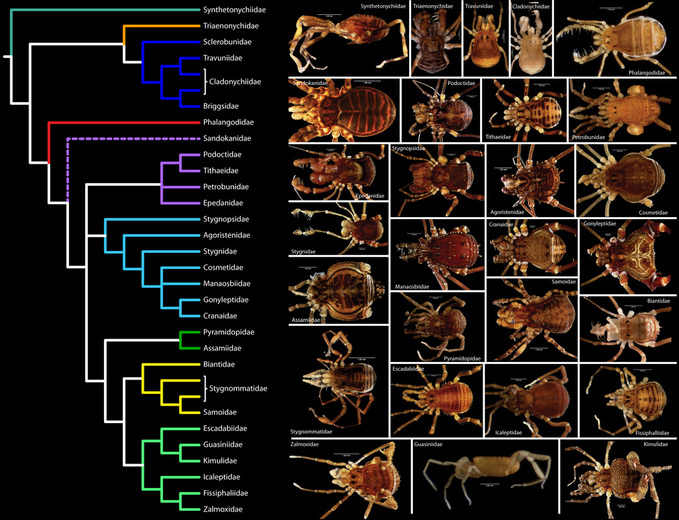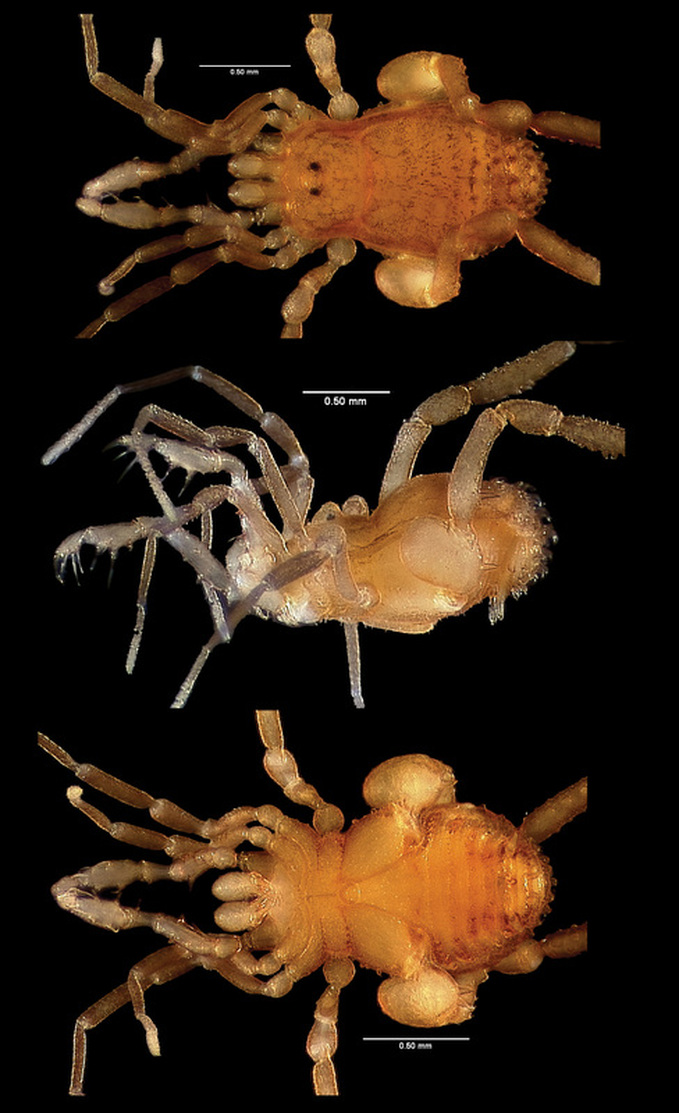Laniatores systematics
Laniatores is the largest suborder of Opiliones (harvestmen), with over 4000 described species. This group is mostly distributed in the tropical and subtropical regions of the world, with a small number of temperate lineages.
Subsequent to systematic revision, Laniatores is organized into 27 families (kindly refer to Adriano Kury's classification of Opiliones). Phylogenetic analysis based on 10 genes favors laniatorid relationships as shown below. Systematic validity and phylogenetic placement of Synthetonychiidae, a relictual lineage endemic to New Zealand, is a matter of ongoing investigation.
Subsequent to systematic revision, Laniatores is organized into 27 families (kindly refer to Adriano Kury's classification of Opiliones). Phylogenetic analysis based on 10 genes favors laniatorid relationships as shown below. Systematic validity and phylogenetic placement of Synthetonychiidae, a relictual lineage endemic to New Zealand, is a matter of ongoing investigation.
On the basis of these results, three new families were described to restore the monophyly of previously recognized groups. Pyramidopidae is endemic to the Afrotropics; and Tithaeidae and Petrobunidae are endemic to Southeast Asia. An exemplar of Petrobunidae is shown below:


